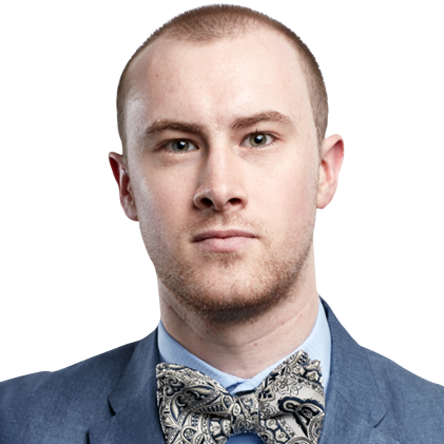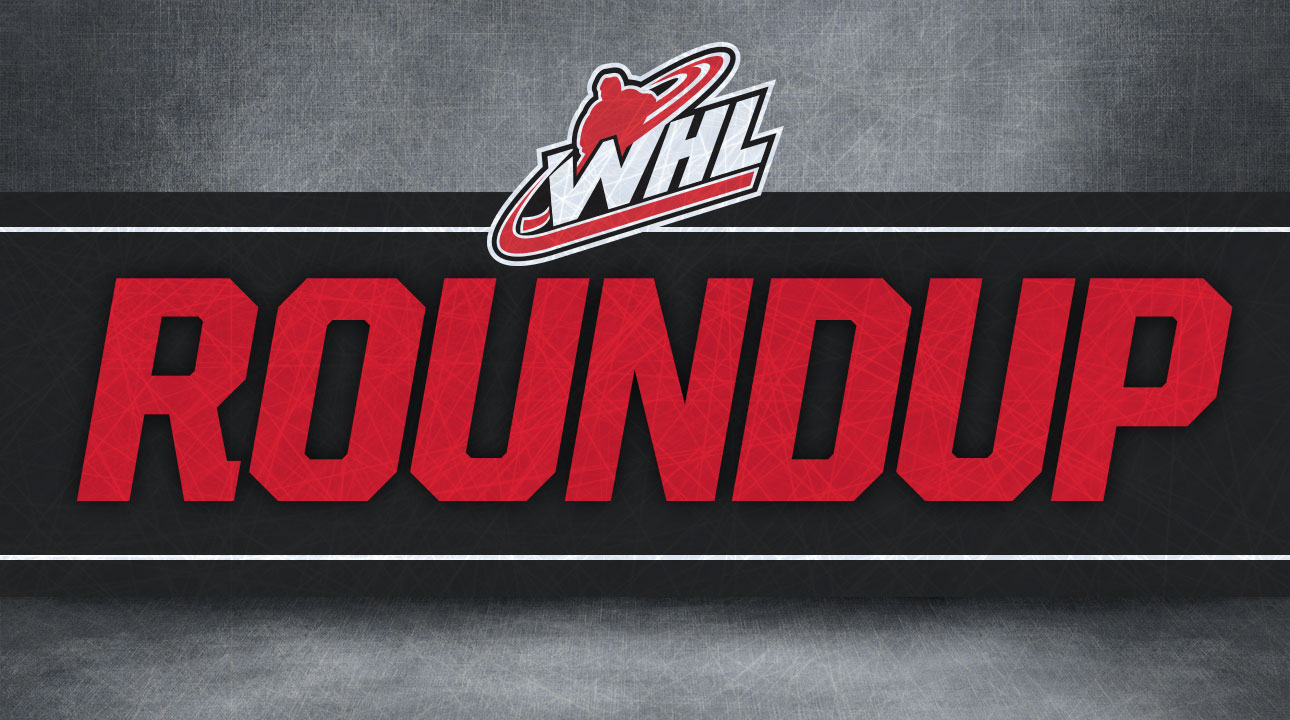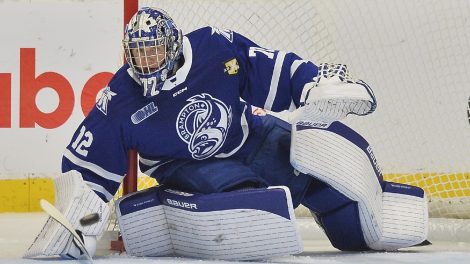Dan MacKenzie was hired as the Canadian Hockey League’s first full-time president last August after more than 20 years with the National Basketball Association.
His time with the NBA was split between Canada and Europe for 15 seasons, most recently as the managing director for NBA Canada, with a year in between at TSN.
The Canadian Hockey League governs the Quebec Major Junior Hockey League, Ontario Hockey League and Western Hockey League with 60 teams between Canada and the United States.
MacKenzie sat down with Sportsnet to discuss his journey to landing the CHL role and how he’s starting to formulate some plans for where to take the league.
This interview has been edited for clarity and brevity.
Sportsnet: Is there any particular role that stands out to you that you enjoyed during your time with the NBA?
Dan MacKenzie: I was 33 years old, living in Paris, which is where I was stationed. That’s where the NBA headquarters were at the time. And my job was to run our event programs in Europe. And so one of the main ones being these exhibition games sort of the precursors to the global games. That set of games was the Grizzlies and the Spurs in Paris. And that was the year it was Tony Parker’s, I think was his second year in the league, and maybe his rookie year they won the championship, the Spurs won the title, and then Parker was going to go home and play in Paris. You know, in front of his home fans. And then the Grizzlies were going to fly down to Barcelona and play against FC Barcelona, which was Pau Gasol, his hometown, and FC Barcelona had just won the Europa League that May.
And so, you know, at that time, I don’t think a Euro team ever beaten an NBA team, it’s happened since then. But the big talk at the time was that they knew FCB was going to give Memphis a go, and the Grizzlies, just they won by 20 or so. It was great. So yeah, we had really good stories to sell. And the neat thing about that experience with what I remember pretty vividly was, that was the year of the Gulf War. And so while I was living in Paris, there was a moment when I was over there where we thought the games may not happen because of the Gulf War and anti-American sentiment and the freedom fries comments at the time by George W. Bush. And so it was a kind of an fascinating time be overseas. But it was a great experience, I was a pretty young in my career and not married yet and all those things. So it was a lot of fun.
SN: I’m sure since you started there you’ve seen a lot of growth in the NBA and its international presence. How have you seen that growth over that time?
DM: For me, the focus was always how do you grow the game in Canada, and it’s really interesting to see now where it’s gone, right? There’s a variety of ways to track it, whether it be you track it by TV rates, and you know, with last year, the pinnacle being seeing an NBA Finals, getting a rating of eight and a half million people or whatever it was, I mean, that was phenomenal from the days when we weren’t getting close.
[snippet id=4748264]
SN: Was basketball always your biggest passion?
DM: My first love was hockey. The first sport I played growing up was hockey. And so I started playing like a lot of Canadian kids when I was five years old. I learned to skate when I was three or four. I think the first thing I took was figure skating and I only did it for one year because I didn’t like it. Ended up switching to hockey and I played hockey until I was … and I never played at a really high level.
I played like kind of house league, select level. And then when I was in my early teens, like maybe 14, 15, we’re in the high school range. At the time, I also played basketball. And then when I got to high school, I knew that wasn’t going to go anywhere on the ice. So I ended up switching and playing basketball in high school. I’m a big fan of all of them, I’ve always just been a really big sports fan.
SN: When you heard that the CHL was looking for someone to fill the president role, was it something that immediately caught your eye or how did that process all work out?
DM: I got a call from a headhunter in Toronto, a sports headhunter, the main sports headhunter in the sports industry in Toronto in Mark Atkins. And he called me in May and said ‘Listen, I have something that you should have a look at. And to be honest, it was right in the middle of the NBA playoffs. Last year…
SN: Which would probably be a super busy time for you…
DM: It was. So I can’t say that I jumped out of my skin when I saw it because I was so focused on everything else. Mark, I know pretty well, he suggested that it would be the kind of thing I should look at. So I looked at it and the posting seemed very interesting. And so I went out to the Memorial Cup and had my first interview. And right from the first interview it just seemed like a really interesting opportunity for me, and really a good fit for where I was in my career.
There were multiple interviews after that and it all went fairly quickly. By early July, we’d settled on that I was going to be getting the job and so it happened probably within about a six week timeframe. With every interview, I got more and more real and more interesting and I became more and more excited about the opportunity, not that it wasn’t at the beginning. It’s just that I was focused on (the NBA).
SN: What interested you the most after you got an idea of what the job was?
DM: People asked me what’s been your biggest surprise about the CHL and moving into the new job. My background before I got into this business was I was a school teacher. And I wasn’t aware of the breadth and depth of the CHL Scholarship Program coming in. And the notion that for every year that a player plays in the league they get a year of university paid for. I didn’t know that coming in. That’s something that we should talk a lot more about. And we should tell more stories about that. Because I think there’s some great ones.
And the reality of the CHL is that, you know, the vast majority of our athletes don’t end up playing professional hockey. So it’s so important that the scholarship program, and the investment that the teams make in these players, I think this year, there’s almost 1,000 former players who are taking advantage of the scholarship program. I think the dollar amounts that our team pays is about $10 million a year towards the scholarship program, which is fascinating and one example of a story that we need to tell more.
[snippet id=4167285]
SN: Do you have a vision of where you would like to position the league and move it forward?
DM: I am getting there. So again I’m literally coming into this completely not from the hockey world so it’s taken me some time. I started in September and I had a really interesting opportunity to do a few things off the bat. First of all is meet a bunch of the the teams and the owners so I’ve been to multiple league meetings now. I’ve had a chance with the Canada-Russia series to go across Canada. I went to five of the six markets and we did some sort of town hall types of events with fans and sponsors and ticket holders and players to get a sense of if you’re in my shoes, what are the kinds of things that you would do? So I’m beginning to kind of get my laundry list of things I want to focus on.
My role is very much focused on a lot of the off the ice elements of the game. Our commissioners really are running the day-to-day of each of the three leagues. So I’m focused on things like making sure we talk about the player experience, again, really, what can we be doing on the scholarship front to be able to make sure it’s best in class? Mental health would be another program. It’s been lots of talk in the last few months about hockey culture, so how can we make sure that we were creating an environment for our players to be safe and feel supported and be able to tell their stories if they have to.
We’re looking at our events. The CHL runs three main events, the Memorial Cup, the Kubota Top Prospects Game and the Canada-Russia series. Are those the right events or should we be looking at… the notion of constantly learning and constantly changing, are there other things we can be doing? Just to make our game better.
Media would be another area for lots of focus. So we’ve got, obviously, Sportsnet is a very important partner of ours. And TVA Sports on the linear broadcast front, but what are we doing when it comes to streaming? We just launched the CHL app this year. So the whole digital world and making sure that we’re serving up our content in the best way for fans to consume it is really, really important. So right there, between player experience, media, events those are all likely going to be elements of the strategy as we go forward.
[relatedlinks]
SN: Is there any one leader in particular, either current or former, whose style you’ve liked and are hoping to implement?
DM: Adam (Silver) was definitely one for sure. The other one would have been his predecessor, David Stern. I worked for David for about 14 years. And David was a master of … he used to say that micromanagement was overrated. Like, he was very hands on. One of the things I learned from David was that you really have to protect your brand and care about it and nurture it and fight for it. And I think those are all things that are definitely applicable to the CHL. The reality is that from a branding perspective, the CHL is a bit of a … not everyone knows what the CHL brand is because you’ve got regional brands and CHL comes in and out depending on the events we’re running. So I think the whole branding piece of the CHL is going to be an interesting challenge as we go forward. In terms of how do we make the CHL mean something to people.
SN: Do you think there was an advantage for you not coming in from the hockey realm?
DM: I think so. I think it gives you the opportunity to ask a lot of simple questions, maybe dumb questions, and I’ve asked my fair share of them for sure. I think when you’re in the world of working with an organization that work change might be coming. That’s really helpful. The people that I’ve been working with, they’ve been really good. The (CHL) commissioners who I worked with, Dave, Ron and Giles, have all been really good to work with in terms of they understand that I’m not from this world. They’ve been really good at saying, ‘Listen, I’ll help you on this. And let’s tag team this for a while’ and so I really appreciated their support.
SN: When you look back 10 years from now at some of the work that you’ve done, is there any particular element that you really want to put your stamp on with the CHL?
DM: I think I’d love to be able to say 10 years from now that we’ve been able to grow the CHL. We talked before about branding, it’d be great in 10 years if the CHL brand is stronger than it is today. I think it would be great if we have been able to continue to provide a player experience that has allowed our athletes to become great hockey players and will continue to be the number one development league for players in the world. But also we’re providing opportunities for players to have the best of both worlds; a great hockey experience and a great school experience. I’d love to see that continue to evolve. I’d love to see us from a media standpoint being in a world where we’re on the cutting edge of new technologies and we’re maybe a bit of a petri dish for our partners in some respects. These athletes are between between the ages of 16 and 20. We should be on the cutting edge because we know we’re working with some of the brightest youth in the world. We should be run very similarly.




